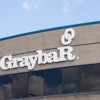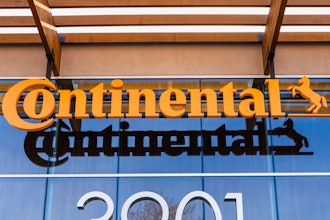
BUFFALO, NY — While Ino Industrial Belting Co. Ltd. began in Shanghai more than 30 years ago, the company has been in the U.S. for less than one year, opening its doors Jan. 1 to customers in the Americas with a fabrication shop.
With four employees and about 10,000 square feet, Ino's Buffalo facility imports rubber slabs from Shanghai, as the entirety of the company's belt manufacturing is conducted in China.
Ino has plans to bring manufacturing to Buffalo, where it promises to "walk customers throughout the whole process ... without the corporate B.S."
"Right now, we bring over all of the slabs from China and then we have a full fabrication facility in Buffalo, so we can supply any finished belt that is needed to the customer, or we can sell full slab or partial slabs to customers who have their own belting shops," said Robert Hochberg, Revenue and Administration Manager for Ino USA.

To be specific, Ino has multiple presses in Buffalo, and can fabricate v-guides, sidewall and lacing.
Bring the home headquarters into the process, and it means an all-of-the-above approach to belting — from running two extrusion lines for its monofilaments, to processing with 24 weaving looms, to its 15 production lines with embossing and coating, to the benefits of its full stateside fabrication shop.
As such, Ino is able to maintain quality control from beginning to end.
The company invested somewhere between $1.5 million and $2 million in the leased Buffalo building, said Marco Martinez Guerrero, vice president and general manager of Ino USA.
"The Buffalo location will allow us to offer belts to customers in the Americas — north, central and south," Guerrero said. "We now have faster delivery for slabs in the Americas ... this was a strategic opportunity to set up shop in the U.S."
Ino's business model also brings distributors back into the supply chain, a trend that has fallen by the wayside as other belting companies sell direct to customers.
Selling to distributors has the added benefit of removing Ino as a potential competitor to its own customers, and is perhaps what makes Ino stand out in a belting world busy with mergers and acquisitions.
"I think maybe from a strategic marketing point of view this is important, as there have been a lot of acquisitions lately, with all manufacturing now going direct to end users and bypassing distributors," Guerrero said. "Now we can fill the void of some markets, and the void of bypassing distributors for the sale of belting products."
Ino USA works in a range of markets, though it maintains a primary focus on food processing and logistics.
The company also supplies belting to the tobacco, industrial, recycling and aluminum extrusion spaces.
Specifically, Ino offers lightweight, monolithic (or homogeneous), timing and woven and fabric belts. The company also works from idea to end product in the manufacture of customized belts.
Its lightweight belts include polyurethane, PVC, oil- and fat-resistant PVC, polyolefin (for tobacco processing, specifically) and fabric conveyor belts. Fabric and woven belts typically are used in conjunction with high-temperature materials, such as lines for aluminum extrusion that might feature Kevlar or Nomex.
Its largest industry — food processing — requires unique belting attributes, such as monolithic belts that are anti-microbial and hydrophobic, accomplished through the use of polyether and polyester TPUs in manufacturing, Guerrero said.
Ino's homogeneous belting brand is REOclean, which uses aramid chords for "zero elongation;" boasts increased hygiene; and has a lower cost through the life of the belt due to less maintenance, shorter cleaning times and less water consumption.
"The vision is to achieve the highest standards in food safety while lowering the industry's impact on the environment," Ino states on its website. "The product materials contain no plasticizers and do not contaminate the goods during transport. The cut- and abrasion-resistant characteristics also make REOclean applicable to many different industrial sectors other than food processing."
Ino's timing belts are used in elevators and garage doors, roller conveying and power transmission applications, which can require exact positioning, often necessary in the packing world.
Guerrero said he hopes customers appreciate the tailored approach from Ino, which uses content creation, including 3D animation and videos, to develop products and demonstrate the procedures.
The goals for the growing belt maker are ambitious.
"There is a big need in the belting community right now for what we do," Hochberg said. "'Belting made Easy' is our tagline because we have the needed combination of a major manufacturer of all types of belting at great prices combined with a fabrication shop that can push finished belts out quickly."
With lead times in the belting industry measured in months rather than weeks, the ability to get product out within one or two days is rarified air.
"Marco is putting together a team that has a lot of experience in belting already, so even though we are technically a small team, we have the belting knowledge to answer questions quickly, provide proper solutions and get the right belt to them quickly," Hochberg said. "We are trying to turn quotes around within the hour."
With more than a decade in the industry himself, Guerrero said he is excited to lead this new venture.
"We will look to continue to disrupt the belting industry with our approach, as we have in the conveyor belt market in Europe and Asia," Guerrero said. "We are excited to expand (our) presence in the Americas, and thought of no better place to do this than in the home of conveyor belting, in Buffalo, N.Y."
Worldwide, Ino maintains more than 540,000 square feet of manufacturing space, with an additional 1 million square feet planned across its global facilities this year alone, the company said.






















